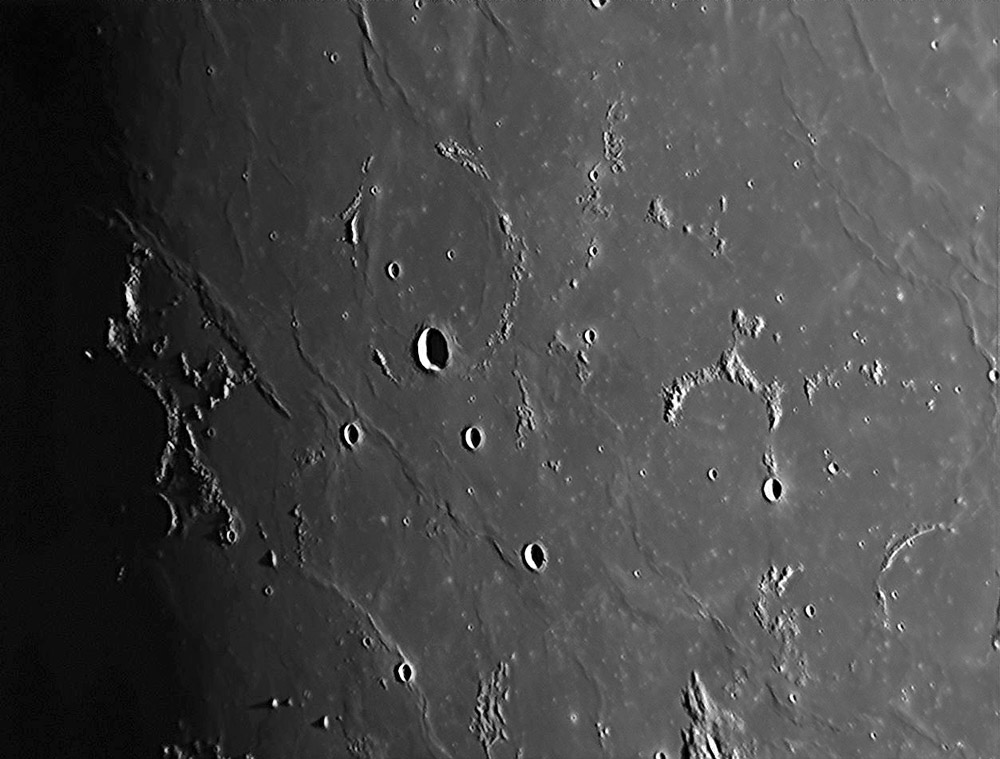October 7, 2018
Lavafall
Originally published July 24, 2009

image by Robert Reeves, San Antonio, Texas
Every mare fills a pre-existing low spot. Some spots, like central Imbrium, were deep, completely covering any large pre-existing craters that may have existed. Around the edges of all maria the lava thins and remnant rims of pre-mare craters are visible. Oceanus Procellarum is a peculiar pile of basalt lavas, that may or may not have filled the Moon's largest impact basin, Gargantuan. Procellarum's lavas are deep enough over most of its northern and central parts to have totally submerged pre-lava craters, but in the southern end, seen in Robert's synoptic view, the lava pile was much thinner. The largest crater still detectable because of a few rim peaks and mare ridges is 110 km wide Flamsteed P at the top-center of the scene. To the east is the somewhat smaller Wichmann R (for ruin), whose northern rim crest is complete, while its southern half is hardly a memory. And Letronne, whose claw-like east and west rims stick up at the image bottom, is biggest of all - about 120 km in diameter. The rim remnants here are about the same size as the Fra Mauro, Bonpland, Perry cluster of old, less completely degraded craters about 500 km to the east. The existence of these large craters in southern Procellarum allows us to conclude two things - the lava here is thin, perhaps 1-1.5 km based on assumed original rim heights - and the surface under the lavas was old and heavily cratered. Think of the sight, about 2.5 b.y. ago, when the rim of the majestic Copernicus-like Flamsteed P was finally overtopped by rising mare lavas, which then cascaded down as a ring of incandescent lava.
Chuck Wood
Technical Details
20 Dec 2007. Celestron 8, 2.5X Powermate, DMK41 monochrome camera, Registax 4, CS-3.
Related Links
Rükl plate 40
Robert's website
Yesterday's LPOD: Google Earth's Moon
Tomorrow's LPOD: A Tangled Tale of Good Intentions
COMMENTS?
Register, Log in, and join in the comments.



